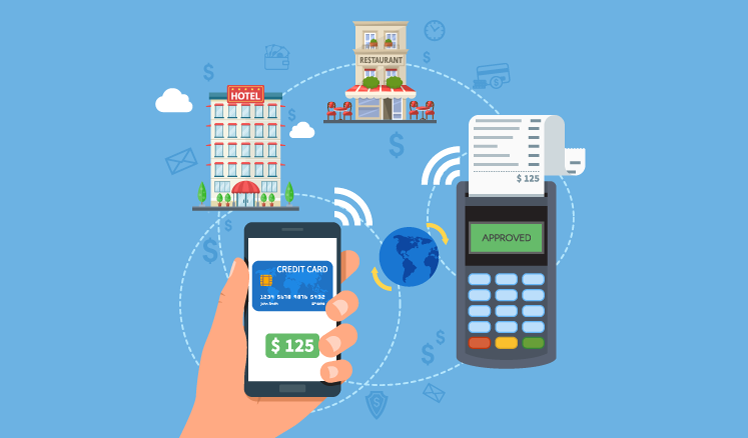Mobile Payments for Restaurants and Hotels: Take It to the Next Level
With the advance of mobile app development technologies, came the convenient possibility to literally turn a smartphone into a credit card. No wonder that hotels and restaurants, being more about convenience and comfort than other businesses, were the first in line to take up the initiative. Let’s look at how these two industries welcomed mobile payments and how they benefited from this technology.

How it all started
Popular brands, such as Hilton and Marriott, Starbucks and Wendy’s, started offering hotel and restaurant mobile payment to their customers a few years ago. This step helped them to reinforce their public images, attract new audience, and create high industry standards in customer service.
Currently, these brands are busy expanding the range of their mobile payment services further, while other businesses in hospitality and restaurant industries are hastily adopting the technology to meet the set standards.
Mobile wallet use
Mobile wallets make it easier for hotels and restaurants to introduce mobile payment to customers. By taking advantage of the already existing popular systems, like Apple Pay and Android Pay, businesses don’t have to develop their own apps. All they have to do is simply implement a solution that would let them receive mobile payments.
This solution is, in most cases, an NFC reader. However, different mobile wallets have different features and give both businesses and customers the right to choose the most suitable option. As mentioned here, for example, JP Morgan’s Chase Pay offers QR code scanning instead of NFC data exchange.
Loyalty integration
A major disadvantage of mobile wallets is their incompatibility with loyalty programs. After all, mobile wallets are universal and mostly tailored to the customer’s needs. So, to make the best of mobile payments, far-reaching brands decide to go for development of their own mobile apps.
Fact is, integrating loyalty programs with hotel or restaurant mobile payment systems in stand-alone apps can not only raise customer engagement and retention, but also give business owners a lot of useful information about the customers’ purchasing patterns. This information is crucial for creating special offers that would connect with the audience and bring real benefit.
Possible challenges
Certainly, introduction of mobile payments isn’t an easy step for any business: as much as it can bring positive changes, it can also entail difficulties. A vivid example of an unforeseen challenge is the issue with Starbucks restaurant mobile payment, where the company failed to properly manage the lines of walk-in customers and customers with a mobile pre-paid order. To prevent customer frustration, businesses should be prepared to offer high-quality service to all the clients, irrespective of their payment choice. Deploying self-serve kiosks in restaurants and hotel lobbies can be a helpful option, too.
On a final note
Once a luxury option, mobile payment is now turning into a customer’s basic expectation, if not a demand. More and more clients make their choice of a hotel or a restaurant based on the mobile services available. As such, businesses that don't offer mobile payment are at a disadvantage, and unless they adopt new technologies, they can lose their position on the market.

